Rodrigo Solano or Rodrigo Sic is a mexican photographer almost known for his way of making portraits. This time we had the opportunity to talk about his experience as an artist and his intentions on social media. Too large-term video call, that’s true. Nothing more to say.
Rodrigo Solano o también conocido como Rodrigo Sic es un fotógrafo mexicano, particularmente conocido por su forma de hacer retratos. Esta vez tuvimos la oportunidad de charlar con él en torno de su experiencia y su relación con los medios digitales. Larga videollamada vía Instagram, eso sí. Ni qué decir.
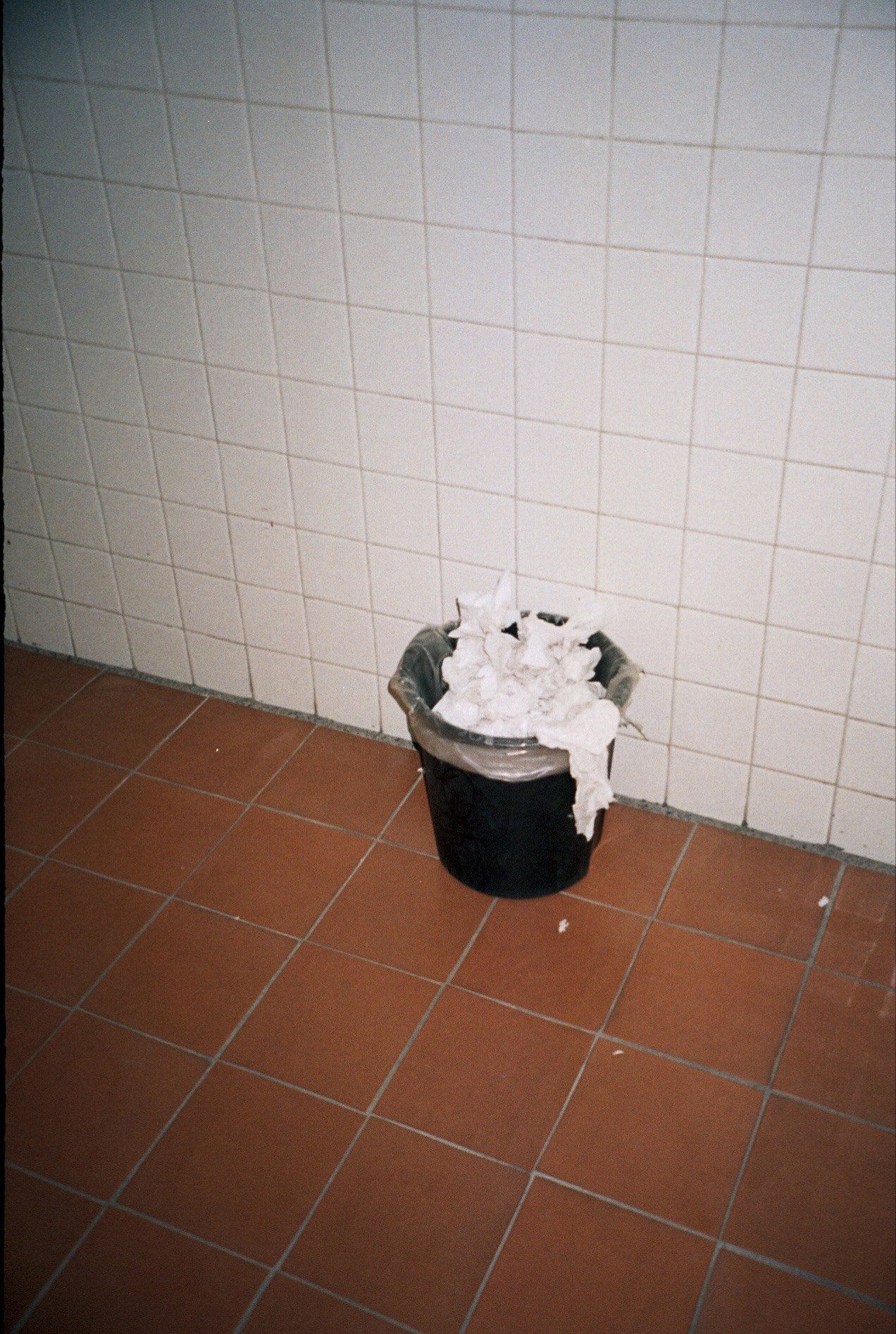
Gerardo: Halt! Halt! Halt! Halt! Halt! Halt! Halt! Halt!
Rodrigo: Jaj. ¿Todo bien?
Gerardo: Jaj. Empecemos por el principio. ¿Cuándo empezaste con la fotografía?
Rodrigo: Empecé, pues, hace siete años. Cuando tenía más o menos 20 años. Empecé por mera… Como de manera terapéutica. En ese entonces yo asistía a terapia, tanto psiquiátrica y psicológica, si podemos llamarle. Entonces, empecé como de hobbie, por decirlo así, pero en realidad fue porque en ese entonces yo iba a terapia, y la que en ese entonces era mi terapéuta… Ella me recomendaba mucho o me incitaba mucho a tener alguna actividad que me ayudara a salir siquiera de mi casa o de mi habitación, por decir así. Entonces ella me hacía mucho hincapié como de: puedes encontrar algo, o quizá el ir y salir a las tortillas, encontrar un motivo para ello. O sea, a lo mejor ella lo planteó en ese momento, lo planteaba esto para ayudarme. Yo empiezo a tomar fotos meramente como tomando una cámara que tenía vieja y de mi mamá. Entonces, empiezo a tomar fotos con el pretexto, pues, como de: ahora voy a salir a las tortillas y tomar fotos. O sea, era el empezar a tomar de manera en la que todo el tiempo salía con mi cámara, y salía y a donde fuera y la llevaba y tomaba fotos. Me gustó mucho la manera indirecta de tener que cargar mi cámara, sentía la necesidad de hacer fotos.
Gerardo: Halt! Halt! Halt! Halt! Halt!
Rodrigo: Haha. R u OK?
Gerardo: Haha. Let’s start from the beginning. The question is when you started with the photo and how you started.
Rodrigo: Ok. I started 7 years ago. When I was 20 years old. I mean, I started with it in a therapeutic way… In a way that at that time I attended both psychiatric and psychological therapy. Right now I’m going to go deeper because I didn’t touch that subject. It was like I started as a hobby. But, it really was because at that time I was on both psychiatric and psychological therapy. And the one who was my therapist at that time recommended a lot of things. She encouraged me to have an activity that would help me get out of my house or my room. She made me understand that I could find something out home. Even if it was going out to the tortillas. To find a reason for it, you know? She, under her methods, suggested this to help me. So I started taking photos of myself, just taking a camera that my mom had. So it was the random way to carry my camera. Photos in an analog way. I mean, I just felt I had to carry my camera and take photos.
G: Like a scape, isn’t it?
R: Yes, yes, of course. So, I was like I started taking photos just randomly. And when I developed my photos it was like I really enjoyed the images. The fact that you cannot see what you’re taking, you know? I think it helped you a lot in a way it’s something that would help to understand yourself. Maybe it is easy to say now, but, I guess it’s what I think and see. Like a retrospective. Because I was like I have never thought I could be where I’m now, like taking photos and thinking I can do that for a while, even after 7 years. In other words, I feel it was a very slow process because I’ve never had the intention of being a photographer. It was not an objective to me, but it was a healthy process to me, I mean, it was like a process that really helped me a lot.
G: I think it was like a process that you touch to learn whatever. But in a self-educated way.
R: Maybe at that moment it was just going to the center of the city and taking photos, wasn’t it? So, it seemed like a learning process to me, above all I could learn to watch the world through a camera, but not like holding on, or putting in frame something and thinking about a nice photo that I would sell. No. It was just like curiosity, ‘cause I really did not understand what I did. For example, I liked taking photos of dead animals, a lot of them. My sister really hated it, she fucked up. But, for me it was good…
G: I think it’s really weird…
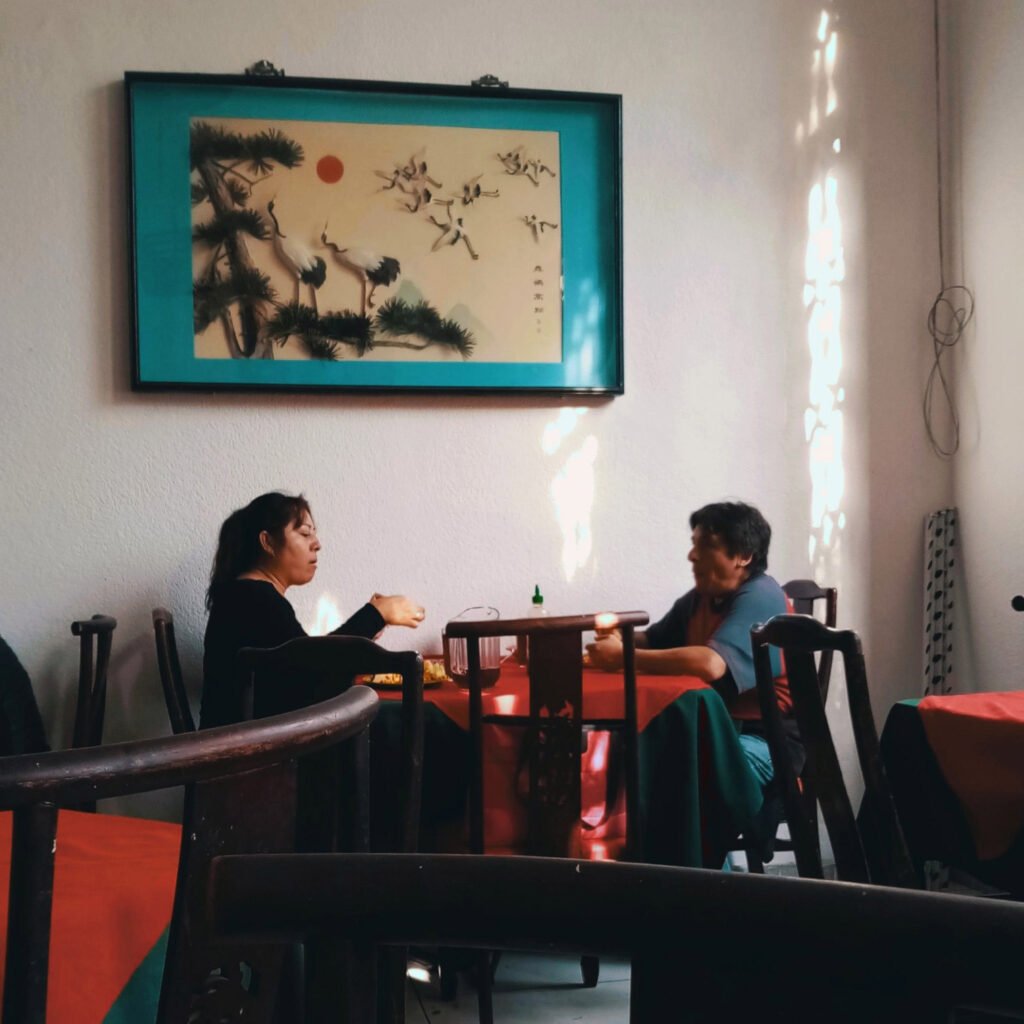
G: ¿Cómo una especie de escape? ¿No?
R: Si. Si. Entonces, como que empecé haciendo foto a una cosa. Y cuando revelo mi primer rollo me gustó mucho el resultado, como de no poder verlas al momento, tener que esperar. Empecé así. O sea, meramente empecé casi-casi como desde una prescripción médica. Yo tenía cero interés en el arte o con el medio artístico, fotográfico. Y también, la verdad es que hacía foto para mí.
G: Me reflejo en esa historia y la siento personal en cierta medida. Como que la foto te acerca a profundidades que no habías visto antes. Y te permite salir del hoyo.
R: Era lo que te decía, ¿no? Si tienes profundidad, pero es un poquito más en eso, porque más bien como que la foto… Siento que te ayuda a ti en ese sentido como a encontrarte, pero no sé. Igual y es fácil decirlo ahora. O sea, ahí te va lo pienso y lo veo, como en retrospectiva, pues realmente nunca pensé en llegar lejos, llegar a hacer fotos ni hacerlo por tanto tiempo o pensar que era algo a lo que quisiera dedicarme más-menos hasta la actualidad, inclusive después de siete años. O sea, yo siento que fue lento el proceso porque nunca tuve la intención y nunca tuve la meta de poder lograr algo con la fotografía ni fue un objetivo, sin embargo, fue un proceso muy sanatorio para mí, fue un proceso que realmente me ayudó demasiado, que fue un motivo.
R: Hum, I mean, I’d been taking that kind of photo for 3 years. I mean, that’s real. I remember that I took photos of the sky, cables, street, trees, cars, it was true, I mean, I’d not taken portraits. My process was a bit like training a bit and learning a lot of things from it. Like a very natural way, maybe empirical too. And slow.
G: But, there is a moment where things change, you know? Like a time when you started to take photos for models and other kinds of photos. How was that?
R: I think it was even after I tried to enter the university, to study arts at Esmeralda. I really wanted to study that just to get the document, but I cannot.. I mean, it was like a watershed, in a way I recognize I do not need the school to take photos or create whatever and try to earn money. At that moment, I was taking photos, so I said: “well, I’ll just continue with it. I need no a school, I need to do it by myself, I like it and it makes me feel good”. It was like I had to learn how to live through it.
G: ¿Más o menos como un proceso de aprendizaje? Pero, autodidacta, ¿no?
R: En su momento era sólo salir al centro y simplemente era como hacer fotos, ¿no? Entonces para mí fue un proceso como de aprender a ver el mundo a través de una cámara, pero no con el interés como de esperar, o encuadrar bonito y que sea una foto bonita porque esa foto la quiero vender y voy a exponerla. No. Era meramente como que yo encontraba curiosidad hacia muchas cosas y directamente yo no entendía porque. Por ejemplo, dando un poco de contexto, a mí me gustaba tomar muchas fotos a animales muertos. Mi hermana odiaba eso. Le cagaba, pero a mi me llamaba la atención.
G: La verdad, está un poco weird…
R: Pues, duré como tres años haciendo fotos de todo lo que había y de todo lo que podía; me refiero: real. Todo lo que recuerdo es que tomaba fotos desde el cielo, cables, la calle, autos, árboles, o sea, de verdad, no le hacía fotos a personas. Mi proceso fue como de poco a poco ir entrenando el ojo, poco a poco ir descubriendo cosas. Como un proceso muy empírico, muy natural y al mismo tiempo, siento yo, lento.
G: Pero, debió haber algo que cambiase las cosas, ¿no? Un momento en el que empezaste a hacer retratos y otro tipo de fotos. ¿Cómo fue para ti eso?
R: Creo que el parteaguas fue después de que yo quisiera entrar a la universidad, a estudiar arte en la Esmeralda. Yo quería estudiar artes visuales como para tener el documento y la carrera, y cuando no me quedé… Creo que fue un parteaguas, en el sentido en el que dije que no necesariamente necesitaba tener escuela para poder hacer fotos o crear a través del arte y vivir de esto. Ya estaba haciendo foto para ese momento, entonces como que dije: «lo voy a seguir haciendo, no necesito escuela, necesito hacerlo por mi cuenta, es algo que me gusta y es algo que me hace sentir bien». Como que tengo que aprender a jugar a vivir de ello o intentar vivir de ello, más bien.
G: Do you think there are differences between the process you got now and the past process? I say, I think about the work, lights, digital, something like it.
R: Yes, it has changed a lot. But, that change is more like I did not know many things I just know, like details. I guess I was too impulsive. And my process was different too, it was analogic. I used to be such a purist and very faithful to how the photo came out in the roll, right? If it came out cool, it was, well, what a fool. And now I don’t, now it is only with digital cameras. I also take the time to say, well, it’s digital, I can take more time to think about how I’m going to do them, how I’m going to do it. I really loved the roll’s aura, without thinking the photo was taken wrongly or whatever. Now I’m different. I try to keep the same essence as in the past: like a simple scenario, just natural light and something like that. Now, I try to adapt to people, I think.
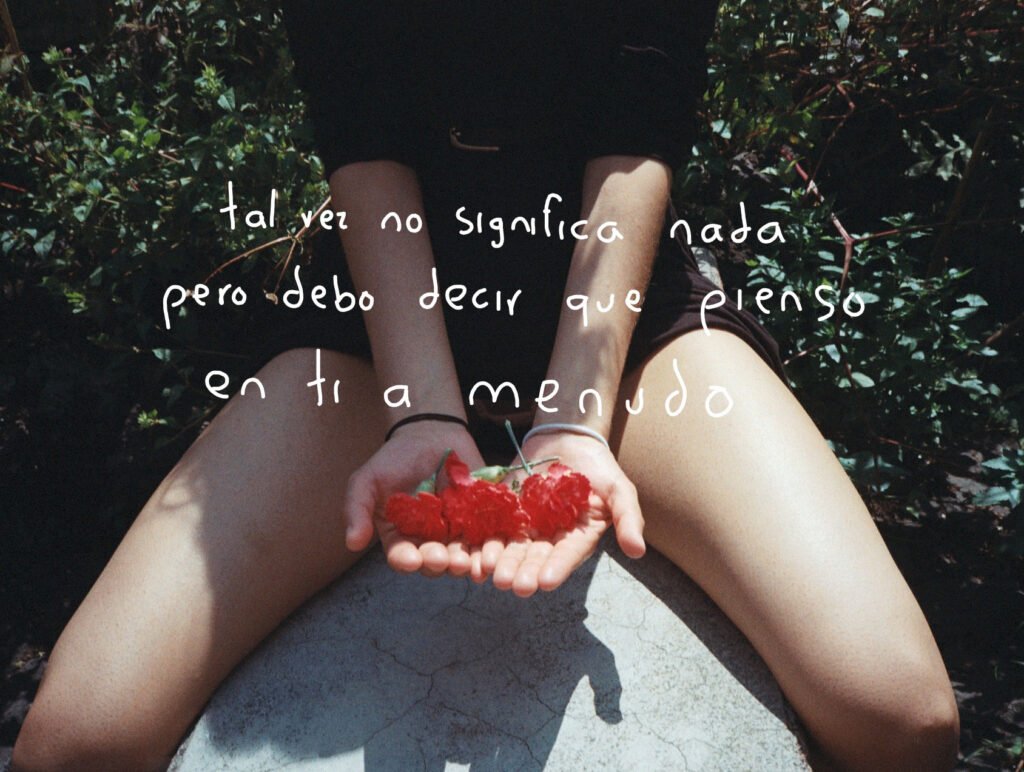
G: ¿Crees que hay diferencia entre el proceso que tienes ahora y el que tenías antes? O sea, me refiero como a el trabajo de foto en sí, la luz, lo digital o el trabajo de algunas cosas específicas.
R: Ha cambiado mucho desde entonces. Pero, ha cambiado de manera en la que antes no contemplaba muchos de esos detalles por el hecho de que todo lo tomaba por el mero impulso del momento. Y también mi proceso, por ejemplo, era el rollo. Yo era muy purista y muy fiel a como saliera la foto en el rollo. Sin importar si salió culera o salió en ese momento así. Ahora ya no. Ahora que ya hago sólo con digital ya es distinto. Como es digital, puedo tomarme más el tiempo de pensar cómo las voy a hacer, de qué manera las voy a hacer, son detalles que han cambiado, pero a veces también intento mantener la esencia con la que antes hacía: tener un escenario muy simple, solamente con luz natural y muy así. Hablando de lo que hago como de retrato, por decir así, me adapto mucho a la gente. Ahora intento resolver y buscar otras formas para que salga bien. Hay quienes tienen un estilo muy muy definido, pero, creo que yo no, yo hago fotos con flash, en un ciclorama o en cualquier lugar.
G: Lo que veo es que en tus retratos más bien tomas dependiendo de lo que te diga la gente, ¿no? Porque la gente que te llama tiene una necesidad en específico.
G: What I can see is that your portraits are more like it depends on what people say, you know? I mean, because people call you due to a specific need for the deal.
R: Today, remembering what I do, I think there are two contexts, in very distant places, because I guess it’s part of what I’ve been doing: just with natural light, to say something, but it responded to a other need, so I had no an apartment or a place where I felt free… A studio… So I learnt about taking photos in the street. I said: “I got the streets”, but I never liked the streets per se. I wanted something natural, like the Botanic Garden at Chapultepec, right? I learnt how to take photos through those places and at the same time it was the kind of photo people ask me to do… It was like nudity. Around semi-nude girls. So, I did not want to put the girls on Reforma, I had to adapt. I mean, now I know. If a friend can lend me a studio, it’s ok, but if not it’s ok too. I mean, sometimes models prefer taking the photos at their homes, it’s just like that. It could be photos of someone putting their feet in a pond, or even photos of semi-nude models in a volcano. If a girl says to me: “I wanna be photographed in a volcano”, well. I divide the process into two: exterior or interior. And I start from it.
R: Hoy en día viendo como lo que hago, pienso que si son en contextos muy distintos, en lugares muy distintos, pero creo que es porque yo hago solamente desde un lugar natural, por decir así, dado que yo no tenía un departamento, no tenía la accesibilidad… De tener un estudio. Aprendí a hacer fotos meramente como de: «tengo la calle», pero no me gustaba la calle, quería como algo más natural, como el jardín botánico de Chapultepec, ¿no? Aprendí cómo hacer foto a través de esos lugares y al mismo tiempo también como los retratos que me pedían… Era desnudo de chicas en chones. Pues no iba a poner una chica en Reforma a enseñar los calzones. A veces me adapto a lo que tengo. O sea, de que si ahora conozco a alguien que me puede prestar un estudio, pues le digo, y hago fotos allí, o si la modelo puede poner su casa o departamento hago fotos allí también. Es así. Pueden ser fotos de alguien metiendo los pies en un estanque, por decir así, y luego son fotos de una morra en su cama. Si una morra me dice: «quiero hacer fotos en el volcán», vamos al volcán. El proceso lo divido en dos: si es foto de exterior o si es de interior. Y parto de ahí.
G: Cambiando de tema. ¿Crees que se puede ser fotógrafo sin tener Instagram o Flickr? Porque estamos contaminados con esta cultura del instantáneo, ¿no? Eso contamina la virtud del artista visual y lo condiciona, creo.
R: Yo pienso que hoy en día, meramente como fotógrafo, tienes que definir primero hasta donde quieres llegar con el trabajo artístico que muestras, más allá de que si tienes otra chamba o alguna otra cosa que te puede dejar dinero. Si tú quieres vivir de eso, o si quieres hacer cierto tipo de fotos y venderlas. Creo que es primero definir hasta dónde estás dispuesto a trabajar para vender lo que es vendible, en el sentido, pues, de que es un producto artístico al final, ¿no? O sea, es un producto al que le estás poniendo empeño, esfuerzo, tiempo. Creo que las plataformas, pues, ahorita… Yo que todo el tiempo me he basado mucho en usar Insta, por ejemplo, veo que sí tiene ciertas limitaciones, al mismo tiempo que tiene un alcance bastante grande.
G: Creo que llegó un punto en el que se explotó demasiado la foto en Instagram y el trabajo que buscas a lo mejor ya no te ofrece el soporte en cierta plataforma.

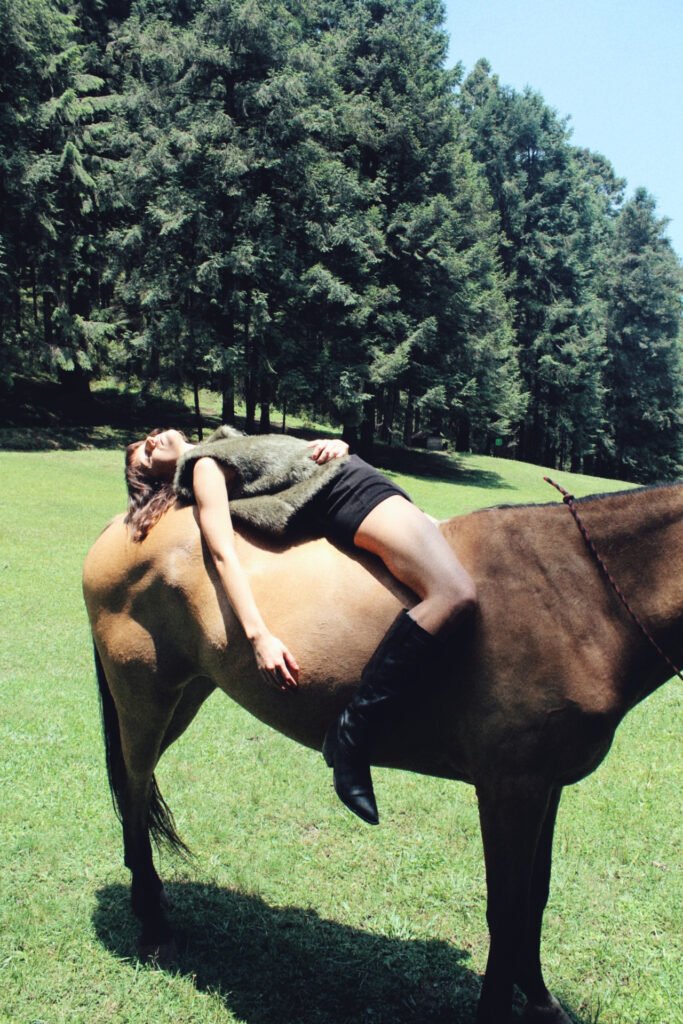
G: Let’s change a bit. Do you believe you can be a photographer without Flickr or Instagram? ‘Cause I think it used to corrupt us as creators, all about that instant culture, right? I think it determines our establishment.
R: I think today, just as a photographer, you had to decide what you’re doing and how far you wanna go with your work, even more than if you got other works or something that paid you. I mean, if you want to live from art, so if you want to make those kinds of photos and then sell them. I think, firstly you get to keep and define how much you wanna work to be where you think you’ll be fine. So I think it’s about first to define how far you are willing to work to sell what is sellable, in the sense that it is an artistic product in the end, right? I mean, it’s a product that you’re putting effort, effort, time, at the same time that you model it, so I think that the platforms, well, right now… I have been using Instagram all the time. For example, it does have certain limitations at the same time that it has a scope, right?
R: Las fotos que llego a subir, las cuido, por ejemplo, de que no sea un contenido delicado. Como para la plataforma, ¿no? He visto otros fotógrafos que usan esta onda como Twitter, o como esta onda de tener que usar una plataforma para poder ver cierto contenido sin censura a través de un pago. Creo que los medios… Hay dependiendo lo que tú quieras hacer y a donde lo quieras llevar. Se adapta, creo. En mi caso, yo solamente me he enfocado en Instagram porque siento que para mí es una plataforma buena, que me gusta, en la que me siento cómodo. Hasta ahora no he sentido la necesidad de tener que mudarme o tener que simplemente subir mi trabajo a otra plataforma. Ya hoy en día podría uno compartir sus cosas a través de un fotolibro.
G: Hablando de Instagram, tu volviste a abrir una cuenta, ¿no? Te banearon. Pero, ya tenías bastantes seguidores. Me interesa preguntarte más bien si tenías alguna estrategia de redes. O simplemente es una cosa lo bastante orgánica. Por otro lado, sin embargo, pienso que el tener seguidores en cierta medida te sube el ego, ¿no? Te vuelve famoso, digamosle. ¿Cómo manejas eso?
R: Primero, con lo de la cuenta, eso realmente… O sea, yo creo que cada creación es una estrategia en sí misma. Y cada creador… Si se da cuenta de que nicho tiene de público. Y que fotos o que contenido pega más. Entonces, en mi caso, cuando lo detecté, lo exploté al 100. Y creo que fue clave, digamos, cuando yo exploté. Empecé a subir así un putero de followers. Fue en ese proceso de pandemia 2020-22. Creo que la gente estaba en un momento… O más bien, todos estábamos en un momento muy específico de nuestras vidas, liando con un chingo de cosas. Entonces, creo que también ese contexto fue muy específico para mí, por decir así. Cuando empecé a subir de followers fue porque creo que la gente estaba siguiendo una tendencia con las fotos intervenidas, que yo le ponía texto, le ponía poemas, tanto míos como de otros autores. Entonces, la gente, quiero pensar, que en su casa, con su soledad, o lidiando con problemas personales, veía una foto y veía un texto y se identificaba. Y yo lo exploté.
G: Ya.
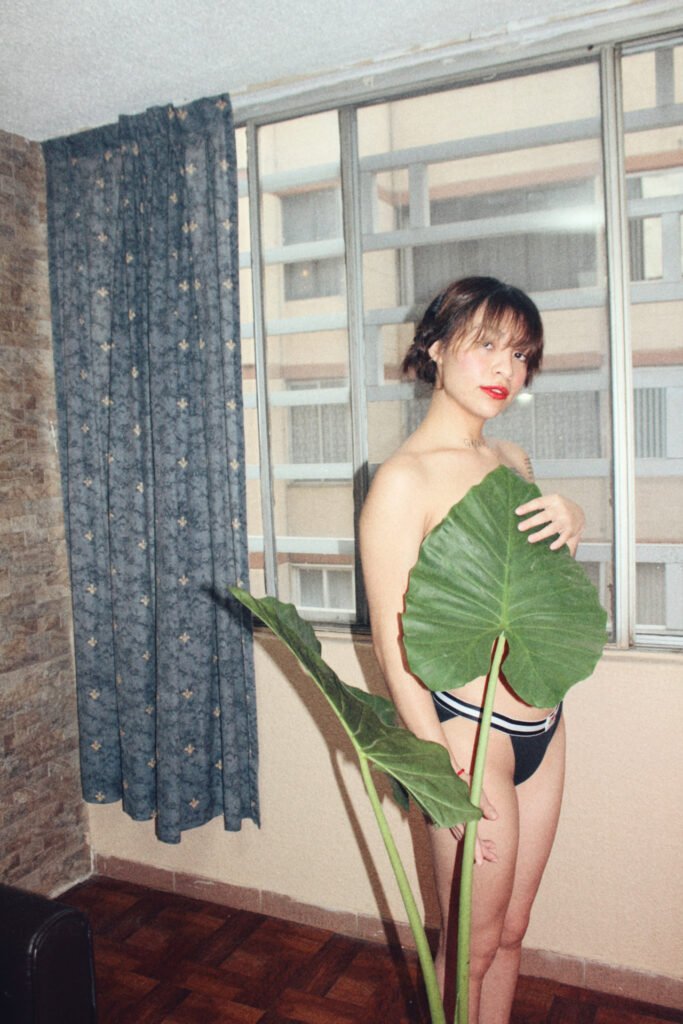
R: O sea, pero si llegó un punto en el que yo tenía que subir casi-casi por obligación, cierto contenido porque ya tocaba subir eso. Sí, era como que yo ya estaba bien.. Bien… Estandarizado. Como que ahí lo pongo de relleno y esta foto es la que va a subir un vergazo de followers y de likes, ¿no? Entonces, yo ya lo hacía así, lo hacía ya con esa consciencia, con esa intención. Y por eso es que subí así un chingo. En menos de un año que subí casi a… Como a 15,000, ¿sabes? Sí me mantenía en una línea de cosas que me gustaran obviamente, pero ya, a veces, era también automático, como de que sé que esto es lo que quiere la gente y se lo voy a dar y ahí va el post. Y eso viene con la segunda pregunta que me hacías, con la fama y eso. O sea, llegó un punto en el que sí tenía el ego muy arriba, porque obviamente me paraba como de culo, de: «ah, puedo llegar con cualquier persona, con cualquier morra, con cualquier modelo, a decirle: quiero hacer fotos contigo». La gente me veía que tenía 24.000 followers, y ya pensaban que era alguien famoso, por decir así. Yo ya lo usaba. Era un privilegio. Obviamente se vuelve un pedo, porque en algún punto ya yo era como de que había un conflicto interno, porque sí, tantos followers, y lo que tú quieras, pero los followers no me van a dar de comer, ¿sabes? Los followers no garantizan que yo pueda tener una estabilidad económica a través de lo que hago, los followers sólo te dan un like, son números. Tristemente. Luego me tocó el perder mi cuenta. Y fue de ayuda, como quitarme un peso de tener que subir cosas que le gustarán a la gente y tener que bajar todo.
G: Está cagado de escuchar, por un lado porque como que pasó de la noche a la mañana. Y siento que te aterriza bastante, ¿sabes? Te baja de tu burbuja. Jaj.
R: Pues sí, o sea, la neta es que no me dolió honestamente tanto lo de los followers. Me dolió más el hecho de que sentí que tenía toda la historia de mi carrera fotográfica en la plataforma. Llevaba 10 años. Los followers… Yo ya no estoy en el mismo canal que estaba hace dos años cuando fue la pandemia y ya no me interesa volver a hacer lo que estaba haciendo para volver a subir de número, ¿sabes? Lo quiero compartir sin estar pensando que tengo que subir foto con un poema bien cabrón, hablar de la ruptura y de la ex, porque eso sé que a la gente le mama.
G: Pensando en la forma en que nos relacionamos con Instagram, por ejemplo, luego veo ansiedad para publicar cosas. O sea, cómo de qué forzosamente hay que publicar hoy algo, ¿no? Que si no van a pensar que ya no existo, ¿no? ¿Te pasa o no te pasa? ¿O te pasaba? Que creas no desde el impulso de comunicar algo sino desde el deseo de sentirse validado con likes.
R: No, ahorita ya no, o sea, ahorita si me lo preguntas… En este momento, no. Es algo que me tiene sin cuidado porque realmente ahorita me estoy tomando este respiro, ¿no? Como de que si hoy no hice nada interesante y no salí de mi casa y no hice nada, no pasa nada, no subo una historia, no subo un post, por decir así. Pero antes, por el contrario, si, o sea, cuando tenía tantos followers, si, si tenía yo la necesidad tener que subir cosas, de subir cosas de mí, como de mi cara o de cosas que me pasaban. Como que ya era una presión que sentía yo y que yo mismo me había puesto, ¿no? Como de ser un personaje. Como para sentir que no estaba ausente de las redes. Ya luego lo hacía por inercia, porque tenía que subir fotos. Y si no hacía fotos, pensaba que tenía que hacerlas, no tenía fotos para subir y ahí me voy a rascarle al archivo de los años como a ver que foto por ahí tengo que puedo rescatar.
G: I think we’re at that point where photographs are only on Instagram and it’s crazy. I guess eventually Instagram no longer offers you the support for your kind of work.
R: The photos I posted I kept them. For example, I try to edit them too, so it will not be a delicate content for the platform, right? And nowadays it is very common on several platforms, for example, I have seen other photographers who use this thing like Twitter or like, like containing certain content without censorship through a payment, right? I believe so far that the media… It’s about what you wanna show and how far you wanna go with that. It adapts for you. In my case, I just focused on instagram because I feel it is a good platform and I feel good with it. And even now you can publish your work as a photobook too.
G: Let’s talk about Instagram because you were banned and then you gotta create another account. But, you had lots of followers before. I am really interested in that because… I mean, I wanna ask you if you had a strategy for it, for example. And I think at the same time that having too many followers can be a problem, it could corrupt in a way you feel more self-centered, right? It makes you feel like a star, how did you manage it?
R: Firstly, with the Instagram user, it was like… Hum. I mean, I feel every creation is a strategy by itself. And each creator… I think everyone knows how your audience is. And what kind of content people from that audience like. So, in my case, when I recognized it, I tried to take advantage of it and I grew up. It was like 2020-22, in the pandemic. I believe people were in a moment, I mean, all of us were in a very specific moment in our lives fighting against too many things around us. So, I think the context was helping me a lot, to say something. When my number of followers grew, I think, it was due to people liking collaged photos, and I wrote on the photos, like poems, mine and from the others. So, people in their homes, fighting with their loneliness and troubles, I picture, just see a photo and identify themselves. And I took advantage.
G: Ok, that was good.
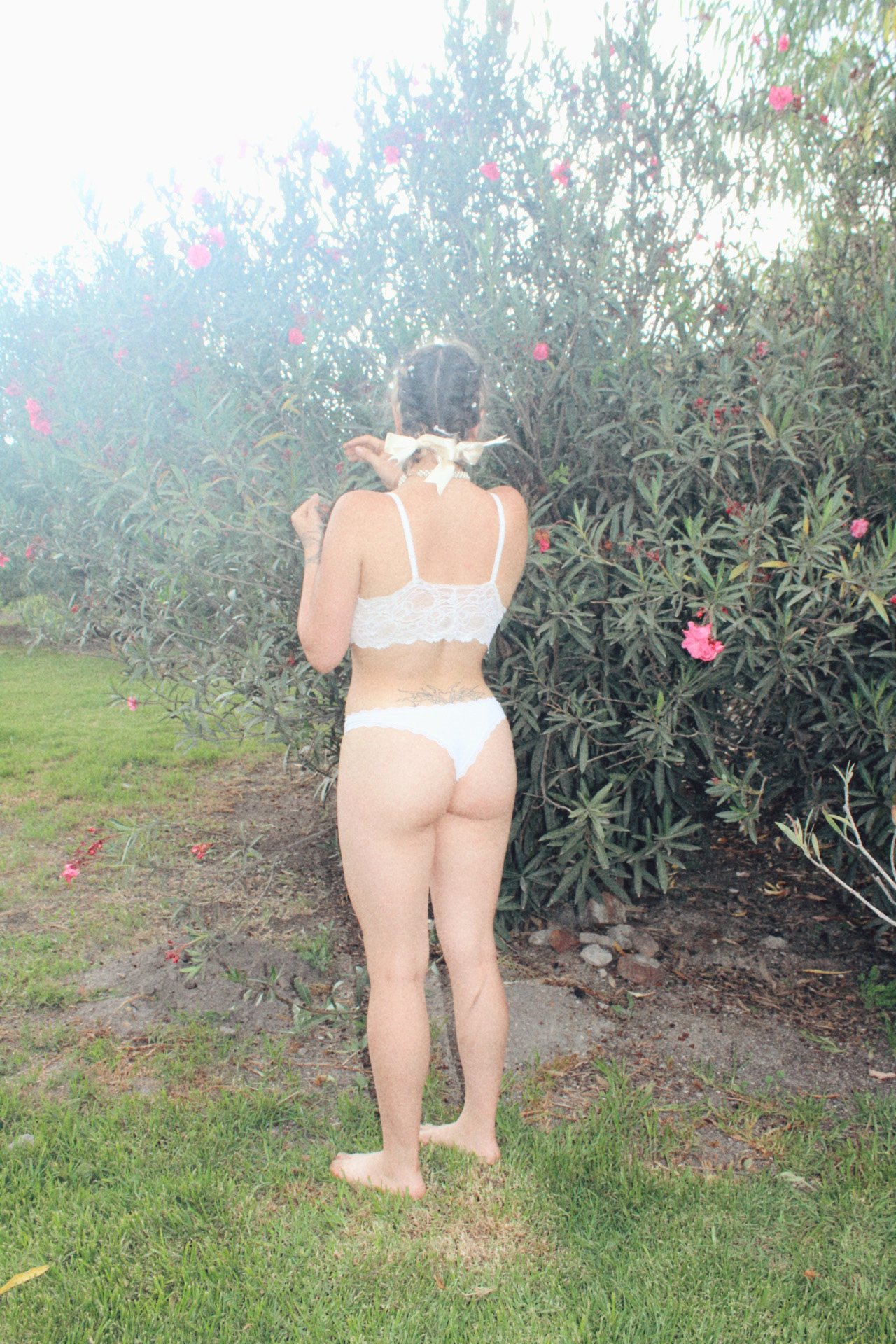
G: Te lo pregunto porque tengo la sensación de que siempre estamos presionados por publicar, por estar presentes, por tener algo nuevo que decir. Y creo que también esta postura como de llevarla relax es válida para un creador. O sea, siento que es mucho más sana, me parece.
R: Sí, como que realmente me deja estar tranquilo, sin tener que quemarme la cabeza o sentir la presión de compartir algo nuevo, por decir así.
G: Algo que me causa curiosidad es la dirección que puedas tener en el momento de tomar unas fotos con un modelo o una modelo, primero, porque creo que implica cierto liderazgo, habilidad de explicar, de dirigir y de interpretar el shooting y al mismo tiempo el lenguaje de la modelo, manejar el nerviosismo, sus intenciones, o su expectativa.
R: Lo trabajo mucho. Se me hace una muy buena pregunta. Por ejemplo, yo en la mayoría de las modelos con quienes trabajo… Les digo modelos, pero en realidad son no-modelos. Y entonces, yo siempre me he enfocado cuando digo eso porque si son chicas que les gusta que les tomen fotos pero que no están dedicadas en model 24/7. Sí soy muy cuidadoso desde la manera en la que dirijo porque sí estoy alerta y como muy atento con lo que mencionas del lenguaje y con cuál es la sensación de la modelo. Realmente la dirección que tomo siempre es muy neutral. Y también pongo atención en sí a la chica nunca le han tomado fotos antes y mucho menos en calzones. Va a tomar un proceso de confianza y de química en la que estemos interactuando para poder hacer fotos así, por decir así. No siempre pasa y no es un conflicto. Tampoco es como de: «si vas a hacer fotos conmigo es porque tienes que terminar en calzones», ¿sabes? Entonces más bien que…
R: Yeah, it was. But at that time I felt I had to post just by duty. Yes. It was like I was too… Standardized? It was like I thought I had to post whatever just for impulse. And I knew every photo that I posted would get me amazing metrics and more followers, did I? So, for me it was like it. I posted by obligation but with that intention. And maybe because of that I had many followers. Less than a year I get like 15k, you know? I followed the same line, like the same idea of photos. However, it seems to me like automatic. Like I know if people loved something I just needed to post it to grow up. And maybe it is about your second question, about being famous. Because, I mean, there was a point where I felt like Superman, very self-centered, too high. Because of that I was like act and told: “ah, I can go with someone, some models, and tell them like: ‘I wanna take photos with you’, and you will accept because I’m famous”. I liked using it. People sometimes saw me and watched as I had 24k followers or more and they thought I was a star. It was a privilege. And obviously it would be a matter. Let me say, because I got many intern conflicts, above all that number of followers did not get me more work, you know? The followers are cool but sadly they’re just numbers and likes. Then I was banned. And it helped me a lot. I could be free and I had no more that kind of weight above me.
G: It is funny… Listen to it. Because you were banned just in a second and maybe it could be a kind of help. It gets you out of your ego. Haha.
R: Yes, yes. To be real, it was not bad for me. I think being banned did not hurt me as the idea of losing my carrer’s archive. I mean, it was about 10 years. The followers, bah… I am not in the same way as I was with the pandemic, and for me it is not important the number, you know? What I try to share is more like thinking about other things. No more poems that people loved like heartbroken quotes. I know people love it.
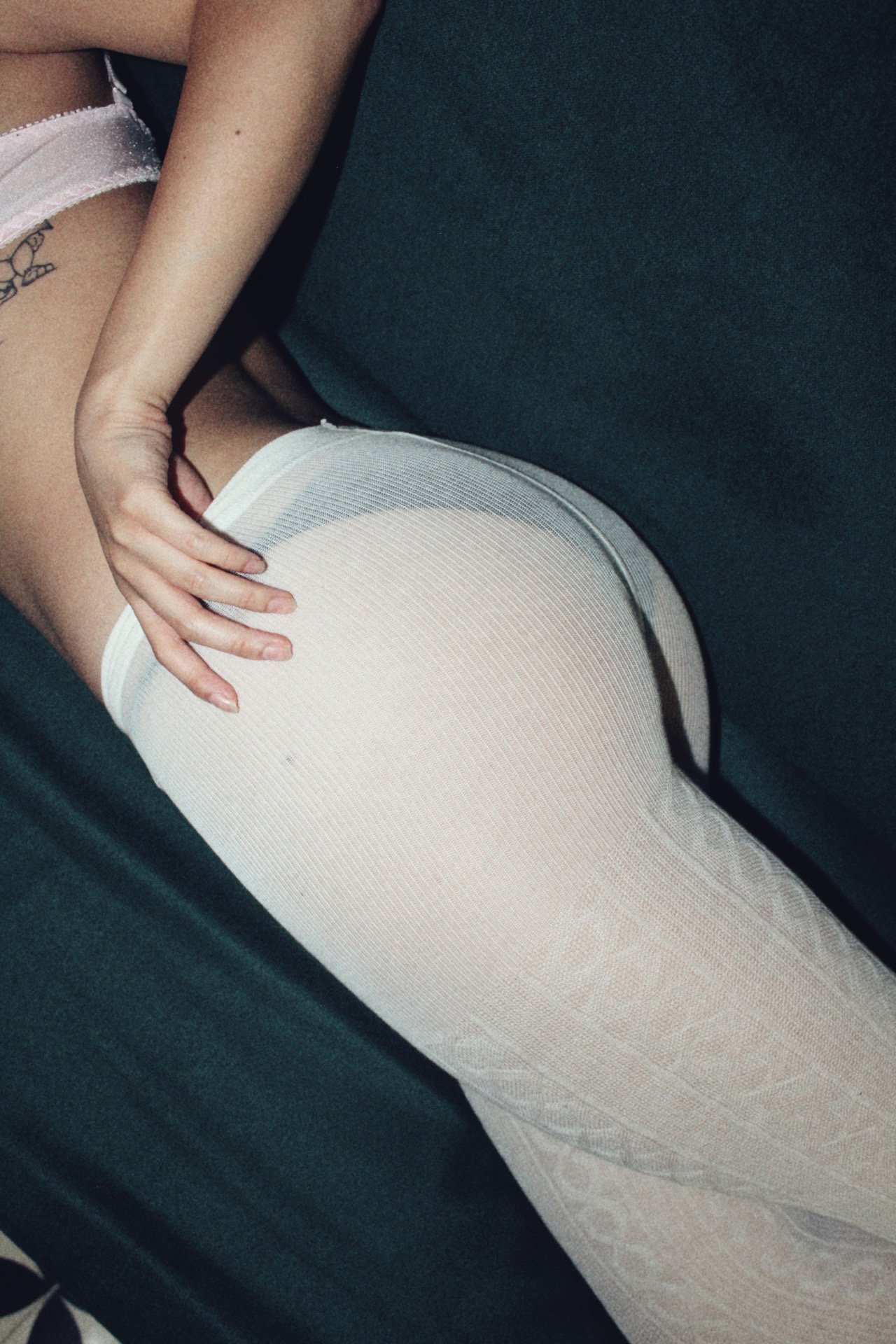
G: Podría interpretarse así, ¿no?
R: O sea, realmente yo tengo la intención de retratar a alguien. Ese proceso es así. Depende de cómo se sientan y lo que quieran o cual sea su intención. O sea, a veces es difícil porque no es como que tenga una forma exacta. Y no es algo que te pueden dar en un papel o en un taller y que te expliquen como hacerlo. Es algo que realmente yo lo voy generando desde la empatía, porque yo lo veo, que la chica puede venir con un desmadre, ¿no? Puede que se haya peleado con su novio ese día, puede que se haya peleado con su mamá ese día, puede que… 1000 cosas, ¿no? 1000 cosas que nosotros pasamos como seres humanos y yo no sé en qué mood venga. Entonces yo intento leer mucho su lenguaje y de la interacción que empieza a haber para saber qué tanto se está prestando para hacer la fotografía acordada. Siempre es un proceso que puede durar 5 minutos o que puede llevar hasta 1 hora y media, o más.
G: Thinking about the way we connect with each other on Instagram, for example, I used to touch other people’s anxiety. I mean, it is like you have to post something to say you’re alive. If you do not do it, maybe people even think you do not exist, right? I think we created that kind of dynamic where just posting photos by the desire of feeling authenticated. Do you suffer from it now?
R: No. If you ask me that, right now, I say no. It is something that does not care for me because I feel like I’m taking a break. Like… Today I did not do something really interesting and I didn’t go out and I did not make a reel, it doesn’t matter, you know? But, before, ah, by contrast. I mean, when I had so many followers I felt the need to post things, whatever, like my face, the places I used to visit. It seems to me like a being under water with that kind of pressure. But it was just me, right? It’s like you were a clown. Like doing something just to make a presence. By far, by inertia, I mean. When I did not post anything I thought I needed. So, I looked for something in my archive and I tried to rescue some photos.
G: I asked you because I felt we are always stressed for posting, for being on social media, for sharing something new. And I think when you are relaxed… It’s fine. Creators need a break sometimes. I feel it is more healthy.
R: Yes, of course. It makes me feel quiet.
G: Por otro lado, por ejemplo, hay fotos que te piden a ti, pero tienes otras intenciones paralelas que son más conceptuales. ¿Cómo diferencias una cosa de otra?
R: Pues, yo no sé. O sea, yo lo hago desde lo que yo quiero, creo. Si hago algo es porque lo imaginé, como que lo soñé casi-casi, hasta cuando alguien me lo pide, porque cuando es algo como pedido bajo una comisión o bajo un pago… Ahí si me limito mucho, me limito mucho como en el sentido de, bueno, dime las necesidades que tú quieres para las fotos que tú quieres y te voy a dar eso. Obviamente lo voy a hacer bien, lo voy a hacer, pero como con un límite, por el hecho de que son las fotos que tú necesitas, ¿sabes? Pero, si lo que me pides es como algo que no me vibra tanto porque no es en lo que estoy clavado en este momento, como lo que digo, sí, vamos a hacerlo, pero no le meto mucho como de mi parte para hacer algo distinto, ¿sabes? Entonces, si tengo algo que soñé o imaginé, esto se lo propongo a la primera persona con la que estoy vibrando. Entonces creo que también es una diferencia creativa que se separa indirectamente, porque si alguien llega y me paga por hacer de fotos para un bautizo, ahí me vale madres, ponerle un sello mío.
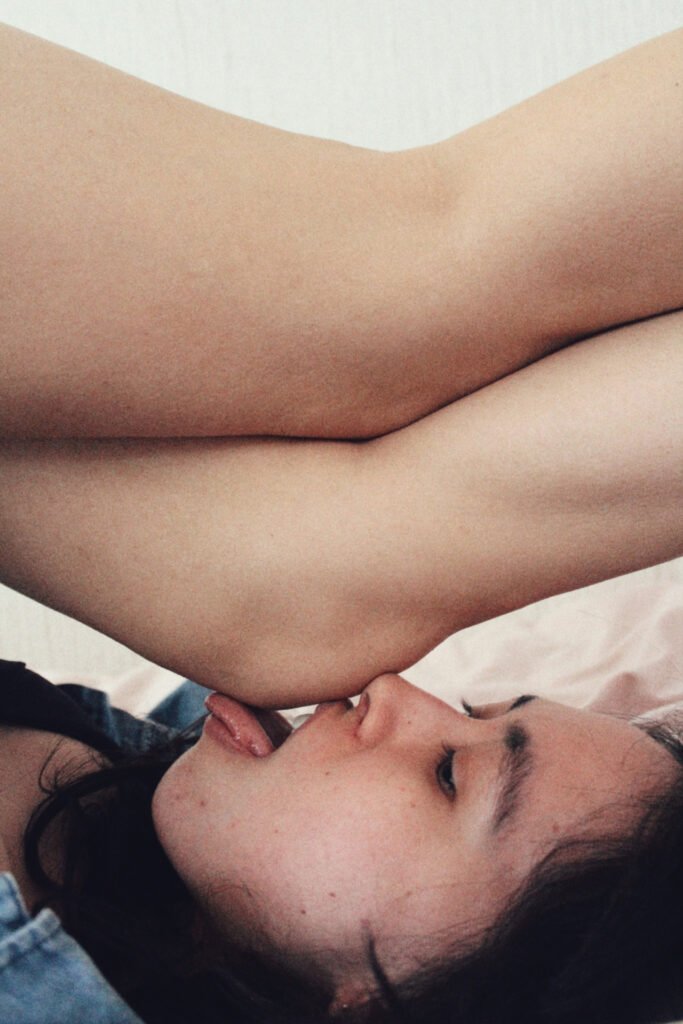
G: Creo que en la mayoría de profesiones creativas pasa eso. Es decir, hay trabajos que simplemente son como operativos, sin sustancia, pero que te ayudan económicamente y te dan conexiones, pero que son un poco escasos, creativamente hablando.
R: Me pasaba muy al principio que quería ponerle mi sello a todo, a una foto de una boda a unos quince años. Pero, es cuestión de aprender que no todo es así.
G: ¿Tu subes a Instagram absolutamente todo lo que haces?
R: No. No me interesa atascar el Instagram de 50 fotos de una modelo o de un shoot que hice aparte. Y hay muchas fotos que me encantan y me gustan, pero que luego no subo, ¿sabes? Como por meramente eso.
G: En tu caso, por ejemplo, cuando vas a entregar fotos de una sesión, ¿entregas un número establecido de foto o las que salgan?
R: No. No. Las que salgan. O sea, realmente no tengo un número establecido, si 100 fotos me mamaron, 100 fotos te mando. Si me mamaron solo 30, bueno pues sólo 30, ¿sabes?
G: ¿Ocupas referencias para una sesión?
R: En el momento, no, o sea, en el proceso previo hacer fotos si intento, bueno, mira, si, por ejemplo, una morra me dice, vamos a hacer fotos mañana, ¿no? Y con ella no he trabajado, por decir así, intento como hacer un recuento de todo lo que me gusta y de todas las personas que veo que están haciendo cosas y me usan para poder llevar una idea mezclada de ello a lo que yo hago, pero no, no es como que piense y recurra al libro de 100 tips para hacer las mejores fotos. Para mí es un ejercicio constante de estar buscando cosas y referencias, pero no solamente desde fotógrafos, sino también de otros medios, otras disciplinas artísticas que constantemente estoy viendo. Hay como también un momento en el que sí estoy muy clavado con el trabajo de x-autora, porque lo acabo de conocer y estoy viendo cómo lo hace y qué es lo que hace, pero intento yo justamente tener como un filtro de pensar que lo hace porque tiene diversos medios y lo hace porque evidentemente eso intenta. No es como pueda replicarlo ni tomar la misma referencia porque no estoy en el mismo contexto, entonces simplemente como que de lo que veo que me gusta lo adapto o lo filtro.
G: Eso me lleva a preguntarte: ¿crees que una cámara por ejemplo es la que hace el fotógrafo o el fotógrafo con cualquier cámara puede darle? Pregunto porque dices que ves otros fotógrafos, pero dices que tienen otros medios o que ocupan otras cosas.
R: Yo siempre he sido de la idea que el fotógrafo con cualquier cámara debe poder hacer, o sea, si a mí me das un Tamagotchi te voy a hacer fotos así. O sea, yo soy de la idea y yo concibo que realmente si quieres hacer fotos lo vas a hacer con las herramientas que tengas a la mano, principalmente porque es la manera en la que yo aprendí y es la manera en la que inclusive he visto que fotógrafos que a mí me gustan lo hacen, ¿sabes? Entonces si hoy en día no tuviera mi cámara digital y nada más el celular probablemente haría fotos igual que ahora. Pero, o sea, siento que realmente el medio si influye. No es lo mismo una cámara de 80 mil pesos o una cámara que me compré el tianguis por 15 pesos, o sea, sí y no. Si concuerdo mucho con esa idea o pensamiento de que realmente el fotógrafo debe darse con lo que tenga y no al revés.
G: Something that makes me feel curious is like the direction you would get when you’re in a shooting. First of all, because it means you have got certain qualities like leadership or acting, or performing or explaining. And you have got the quality of reading the model’s language and managing their feelings and their intentions. Or their expectations, right?
R: I always perform it. And that question is a very good-question. For example, at most shootings and with some models whom I worked with… I say models but the truth is that they are no-models. And, I always focus on it when I say it because they are people who love being photographed but they are not working as 24/7 models. So I try to take care and keep the way I manage. I’m always, like in a warning condition. I try to see what you said about language and the sensations. I really think my direction is neutral. And I always pay attention if the model has never been in a shooting and never as a semi-nude model. So, the process is different and it’s about time and chemistry, about the way we interact to take the photos, to say. Not always enough and it’s not a problem. But, it isn’t like: “if you want to take photos with me you’ll finish getting undressed”. So…
G: But, people could interpret it, right?
R: I mean, I really have other intentions while I make a portrait of someone. The process is that. It depends on how models feel and how far are their intentions. I guess sometimes it’s hard because it’s not the exact way to do it. And it is something you can’t get by a workshop or listening to someone. It’s something I used to generate from empathy, because I see it. I can say maybe people are stressed by whatever, right? And I do know they are humans and have feelings. I do not know what mood they were in. So, I try to read mainly their language and the way we interact to know how I should start. It is always a process that could go on for 5 minutes or 1 hour or more.
G: On the other hand, I wanna ask you, I mean, how do you divide the process of photos that are more conceptual and those photos that are so simple?
R: Well, I do not know. I just do what I want, I think. If I do something it’s because I pictured it. It’s almost like a dream, even when someone asks me for commissions… Although, when someone asks me for photos like for a wedding I limit my own performance. It’s obvious I’m doing it well but it is about pictures you need, you know? I mean, let’s do it but it is a different way to do it. I won’t be so creative. I will not put much of myself on that shooting. So, if I dreamt something and I think it’s good I just tell somebody whom I appreciate.
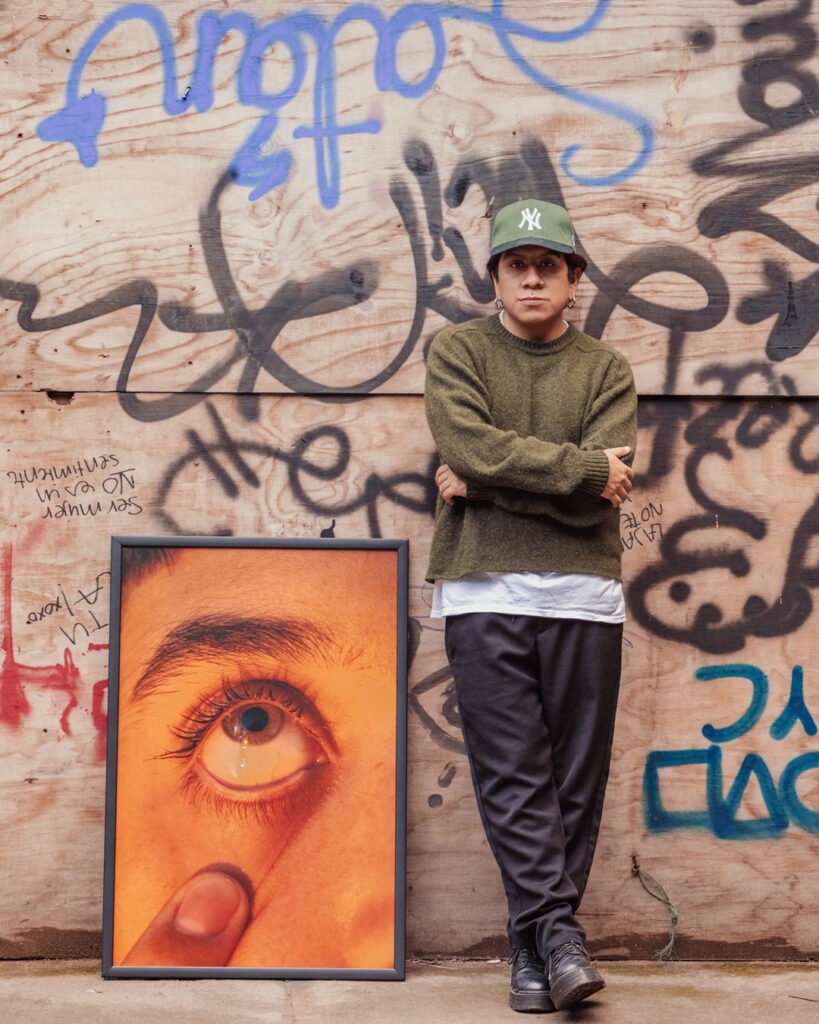
G: ¿Y crees por ejemplo que la cámara como objeto posibilita diferentes dinámicas o que permite crear vínculos de alguna manera distinta? Me refiero a que, por ejemplo, no es lo mismo que tu hagas una sesión de una persona semidesnuda en su cama con tu teléfono a que lo hagas con tu cámara digital que es como mucho más robusta, ¿no? Siento que también genera muchas dinámicas distintas el artefacto por su geometría o por su condición como objeto.
R: Y totalmente. La cámara tiene un peso. O sea, dando ese ejemplo que acabas de dar, si, cambia. Cambia el escenario y la forma en que conectas. Si le da, siento yo, cierto profesionalismo y seriedad. O sea, pero lo que dije anteriormente… Me refiero a que no por eso mañana voy a salir a hacer fotos con mi iPhone, ¿sabes? O sea realmente lo digo en una situación muy específica. Pero sí tiene un peso total que siento que al mismo tiempo hasta como fotógrafo te da esa seriedad ¿no? Tampoco es la misma relación que tienes en digital que en rollo, o el tipo de lente. Con una de rollo no te preocupas porque salga porque al final si salen 2-3 mal era la magia de la cámara de rollo, pero si me das una cámara que graba en 4k, a lo mejor voy a pensar en hacer un escenario distinto al de la cámara de rollo, por decir así, ¿no? O sea, siento que influye y evidentemente también para las personas que retratas.
G: Me imagino la escena: tu llegando a una sesión sólo con tu iPhone roto. Ese sería yo.
R: Yo tuve amigos que decían: «en algún momento si no tienen cámara, hasta van a hacer con el celular», ¿no? Nunca me ha pasado y la verdad creo que no lo haría. Si para un Tik Tok, pero para una sesión trataría de conseguir una cámara culera, aunque sea.
G: I think many professionals and creatives do it. I mean, some works are just for making money, like empty, and there are others that make you feel happy because they got creative briefs.
R: At the beginning I wanted to put myself on all of the commissions I had, a wedding, a XV. But, it is just by learning that you recognize it can be different.
G: Do you post every work you got on Instagram?
R: No. It is not important to me to share 50 photos from a shoot or just some kind of model. I got some photos I love but I’d not post, you know?
G: In your case, for example, do you send an exact number of photos?
R: No. No. All from the shoot. I mean, I got no number. If a shooting was about 100 photos and all of them were good for me, I’ll send you that 100.
G: Do you reference your work?
R: At the moment, no. Not for sessions. I mean, in the previous process I try to… For example, if a woman tells me: “let’s do a shoot”, and if I didn’t meet her, I try to make a kind of mood-board that I could take to mix with what I do, but not, it is not like I’d read a 100 tips for taking photos book. For me it’s more like a diary exercise to look for references and inspiration, but not only from other photographers, even other kinds of media. It’s true that sometimes I admire the x-autor work because I’ve already met, and just watch how they do what they do and why. But, I tried to make my own filters. I try to not replicate or copy the references, so I adapt what I see.
G: ¿La foto tiene un fin en sí mismo?
R: Siento que depende mucho del nicho y en el ámbito en el que el fotógrafo se desenvuelva. Es como esas preguntas de si una foto es buena o mala, o si todo es válido. O sea, si hoy viene un fotógrafo con una carrera de 30 años o 20 años y me dice que mis fotos son malas, probablemente sean malas, pero desde su punto de vista porque él ha vivido un contexto, ha tenido un método distinto para hacer fotos. Es como si el Zombra le dijera al Siler que está haciendo bien culero un corte. Cada foto tiene su nicho y depende de eso para mantenerse, ¿no? Hay quien hace editorial, hay quien experimental y a veces no se cruzan, depende mucho.
G: Anyway. Si pudieras darle un consejo a alguien que quiere comenzar con una cámara, ¿qué le dirías?
R: Si le interesa hacer foto, que haga, que tome todas las fotos que pueda con el medio que tenga. Si tienes nomás un celular, toma todas las fotos que quieras y puedas con el celular, si tienes la capacidad para comparar una cámara de 100 mil pesos, compratela y toma mil fotos con esa cámara. Que no existe una limitante de pensar que estas fotos sí, y estas fotos no. Como que pueda hacer todo lo que quiera en foto, porque siento que así es cuando te das cuenta de lo que te llama la atención, simplemente haciéndolo. Ahí ves si te llama más la atención la arquitectura, la naturaleza, los retratos, el enfoque, el grano, detalles. Y ahí no importa si tomaste un curso con no sé quién, o si tienes followers, o si tu amiga te dijo que ya no quiere ser tu modelo. Sólo siento que hay que ser constantes, y darle, y darle, y darle.
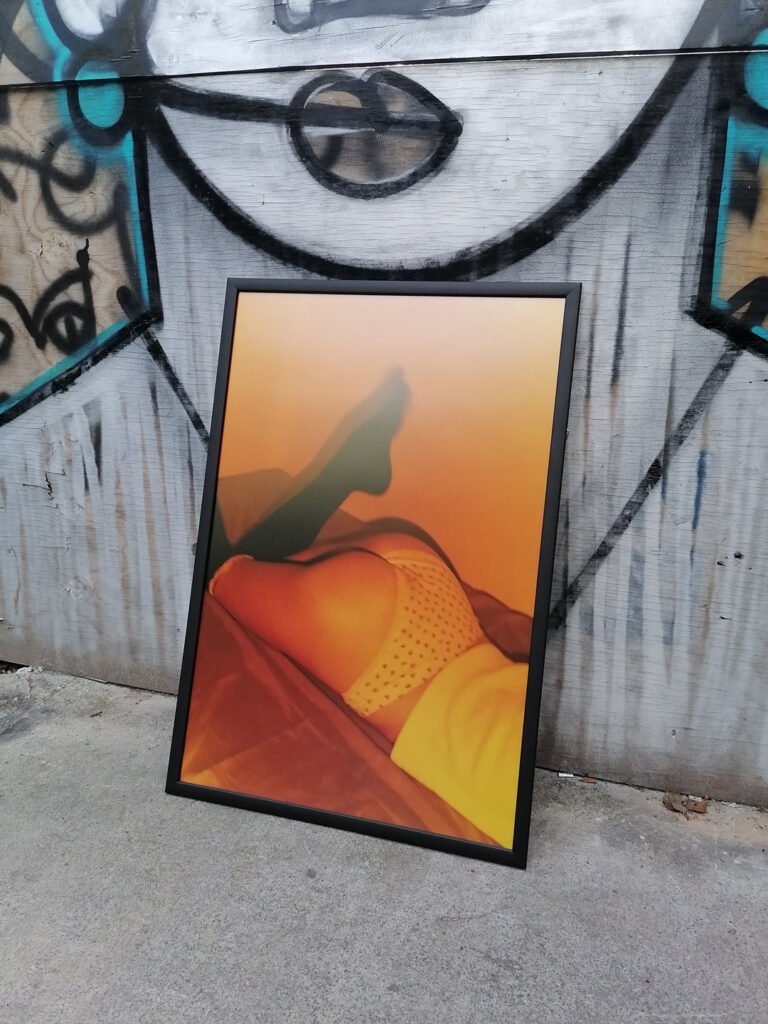
G: Por último, ¿qué sigue para ti? ¿Cuál es el siguiente paso?
R: Yo quisiera poder concretar una segunda exposición individual para finales de 2023. Es algo en lo que apenas estoy tanteando y remojando los pies. Como a corto plazo es exponer por segunda ocasión, a más largo-mediano plazo: no morir en el intento de hacer fotos y probablemente sacar un libro, una recopilación. Hace poco vi un libro de Sofia Coppola, un recopilatorio de las películas que ha hecho y las fotos que ya ha tomado, como de los hechos… Obviamente yo no tengo una intención muy genuina de querer yo tener un propio fotolibro como recopilación de mi trabajo, ¿sabes? O sea, es distinto. Acabo de ver ese libro. Y hay otra fotógrafa chilena que se llama Rocío Aguirre, que también sacó un libro. Entonces ellas dos son como inspiración y motivación a decir lo del fotolibro. Pero, sería un objeto más personal, más que comercial.
G: Hay mucha gente intentando publicar sólo por publicar. Sólo como para validarse.
R: Si, pero en mi caso es más como para mi, para decirle a mi mamá: «mamá, ve, esto es lo que he estado haciendo». Es como la percepción familiar que puedan tener de tu trabajo porque creo que también como artistas, sobre todo en México, la familia luego tiene una perspectiva del arte un poco vaga y un poco vacía o superficial, como… Como de gente que no la está armando o que está perdiendo el tiempo.
G: ¿Cómo ha sido esa relación con la foto para ti y tu familia? O sea, aquí en México no tenemos una cultura de la imagen bastante curtida como si en otros países, y eso puede afectar la forma en la que tu familia te mira, por ejemplo.
R: Obviamente en México, pues, que es donde vivimos es muy difícil que a veces la gente le tenga fe a si el hijo se dedica al arte, ¿no?, por decir así, y obviamente viene por una carga sociocultural bien cabrona. Yo no vengo de una familia donde alguien se haya dedicado al arte, como otros que cuentan que su abuelito les regaló su primera cámara cuando eran niños. No. O sea, siempre he tenido el apoyo de mi familia. Y han estado viendo lo que hago, pero porque yo también he abierto la puerta a ellos, yo siempre he compartido lo que hago y cómo lo hago. Nunca he sido hermético. Siempre he me dado como el pie de poderle platicar a mi mamá o a mi papá un poco más allá de decirles qué hago. Mi papá ni siquiera sabía que yo le tomaba fotos a morras, por ejemplo, para él fue como todo un mundo también. Y hoy me pregunta: «¿y cómo lo logras?, ¿cómo les dices? ¿No te da pena o a ellas?». El año pasado, si, también fue como hasta emotivo el que me hubieran llamado a esa exposición que tuve. Entonces para mí fue como muy reconfortante desde el lado familiar, el que vean que no fracasé. O sea, como desde la visión suya de quién es Rodrigo Solano.
G: I wanna ask you: do you believe a camera makes a photographer or a photographer could take any camera to do his work? I question it because you said you took references from other artists but they got other devices you do not get.
R: I’ve always had the idea that a photographer should do whatever with any camera. Even if you get me a Tamagotchi I will take photos with it. I mean, I got the idea and I conceive that you could do your work with anything and I like other photographers that also do that, you know? So, if nowadays I didn’t have a camera and just got an iPhone I’d probably take photos the same as now. But, I feel the device affects it. A 20K USD camera is not the same as a 1 dollar camera, I guess.
G: And you think that the devices as an object can make possible new dynamics? Or maybe they can make new ways of networking? I mean, for example, taking photos with a camera is not the same as taking photos with your iPhone. Even if you’re taking photos of a semi-nude girl, right? I think the devices can affect the way you and the model interact.
R: Yes. Totally. Camera has its own weight. I mean, it affects the scenario and the way you can connect. I feel, kinds of professionality or sobriety. But, as I said before… I will not go out with my iPhone in my hand to take photos, you know? I guess I said it at a specific time, right? But, yes, of course, it is not the same if you work with an analogue film or a digital or something more. With an analogue film you don’t care if photos are bad, that’s the magic of reel, but if you get me a 4K camera I will think of a scenario where I can take advantage of it.
G: I picture that scene: you’re gonna have a session with your broken iPhone. I will do it.
R: I had friends that told me: “if you do not have cameras, you would work with your phone at a time”. I’ve never worked as that and the truth is that I will not. Maybe for a Tik Tok video, but not for a shooting. I prefer to get some fucking camera.
G: Do you think the photo has his own meaning?
R: I feel it depends on the scene and the theme photographer talks. It’s like those questions about bad or good photos. If nowadays a photographer, with a 30 or 20 years career, said to me that my photos are like asshole, it probably would be bad, but it is his particular vision, he’s lived other kinds of things and surely had other processes. So it’s like Zombra telling Siler he’s making bad graffiti. Everyone has its own shared niches, right?
G: Anyway. If you could give advice to someone, what would you tell them?
R: If they are really interested in photography, so… To take all photos they can take with any device they got. If you only have a cellphone, take photos with it, and even if you can get an expensive camera, buy it and take photos with it. Photography is unlimited, so you can make photos with anything. If something is important for you, just do it. Even if you do that you will recognize if you love architecture more than portraits or natural landscapes. And it does not matter if you did not go to a workshop for learning photo techniques, or if you have followers, or if your friend said to you that hate your photos of her. I feel it is just about being constant.
G: So, for you, what’s next?
R: I really wanna exhibit my work in another museum’s exhibition. It’s something that I’ve already thought about. More like short-term. To no-short-term, maybe, to not die in the intention of making photography and probably making my own book, a compilation. Days ago I read a book by Sofia Coppola, a compilation of her movies and the photos she took…
I obviously had the true intention of making my first photobook, you know? I mean, it will be different. I’ve already read that book. And I read another by Rocío Aguirre, who also published her own book. So they are my inspiration and motivation. But, it would be just a personal object more than commercial.
G: There are too many people thinking about publishing just for publishing. Just to feel authenticated.
R: Yes, but in my case it’s more like saying to my mamma: “mom, look, this is what I’ve worked”. It’s more about the familiar perception they could get from my work ‘cause many artists… Others have their own perception of art and it is superficial most of the time… Like people who’re working as artists are just poor people.
G: How are your familiar relationships? I mean, in Mexico we got that idea of art that could affect your career. Not like other countries where families almost support artists.
R: Yeah. In Mexico, so…Where we’re living… It’s hard for people to support their own family who are artists, isn’t it? Just to say. And obviously it came from a tradition which is so hard. My family has never been touched by art like other families where the grandpa gave away a camera to the grandson. I guess I’ve always been supported by my family and they always see what I do, but maybe because I told them. I am not a recluse. Although, it’s hard for me to tell my mom or my dad more about what I work with. My dad did not know that I took semi-nudes photos. Now he asks me: “how do you do it?”. Last year, when it was my first exhibition, it was like an emotive story. At that time it was so familiar to me that my dad could see I’m not a loser. I mean, from their own vision about who Rodrigo Solano is, you know?
No sé para que publico, de todas formas no ves mis indirectas.